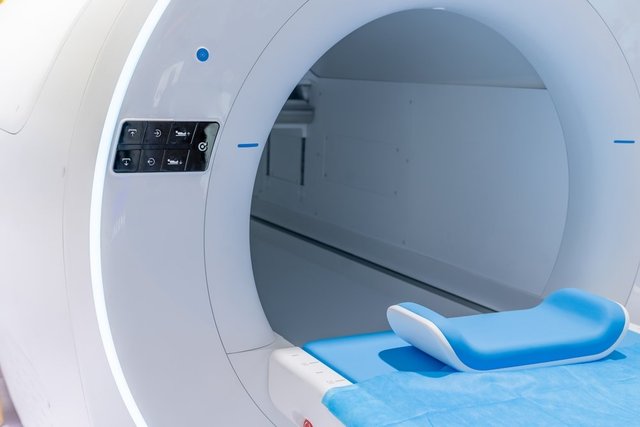Prostate MRI: Why Is It Necessary and What Does It Reveal?
Men's health requires just as much attention as women's. However, many men often postpone a visit to the doctor, especially when it comes to sensitive prostate problems. However, a timely diagnosis not only helps detect diseases early but also prevents serious consequences.
One of the most accurate and informative examination methods is prostate MRI – magnetic resonance imaging. It allows a detailed examination of the organ's structure and the detection of abnormalities. In this article, we explain what a prostate MRI is, how it is performed, what diseases it can detect, and why you shouldn't be afraid of this examination.
1. What is a prostate MRI?
A prostate MRI is a non-invasive examination performed using a magnetic field and radio waves. Unlike X-rays, MRI doesn’t use ionizing radiation, which is why it is considered a safe procedure. The device produces detailed tissue images and allows the physician to perform a highly precise examination of the prostate at various levels.
The examination is often ordered when patients complain of pain, difficulty urinating, reduced potency, or suspected inflammation or tumors in the prostate. MRI is also used to clarify the results of other examinations, such as ultrasound or biopsy.
2. When a doctor may prescribe a prostate MRI
There are many indications for an MRI. The most important ones are:
- Suspected prostate cancer
- Challenging chronic prostatitis
- Enlarged prostate (adenoma)
- Discomfort with urination
- Pain in the lower abdomen, groin, or lower back
- Monitoring after surgery or treatment
MRI also helps physicians plan biopsies to determine the exact area from which tissue should be taken for analysis.
3. Procedure
A prostate MRI doesn’t require any extensive preparation. Patients are usually advised to fast and have a bowel movement for 4–6 hours before the procedure. Sometimes a laxative or enema is prescribed for better visualization.
The examination itself is performed in a special device with a table on which the patient lies. The patient lies still while the device takes a series of images. The procedure lasts 30 to 45 minutes. In some cases, a contrast agent is administered intravenously to allow for more precise tissue differentiation. It is important to note that the MRI examination is completely painless. The only possible discomfort is lying still and the noise of the device, which can be muffled with headphones.
4. What does an MRI of the prostate show?
The MRI results provide the doctor with comprehensive information about the condition of the prostate. The images can show:
- Size and shape of the organ
- The presence of inflammation (prostatitis)
- Lymph nodes, cysts, and other growths
- Areas of suspected malignancy
- Tumor extension beyond the prostate (if present)
Thanks to its high accuracy, MRI can detect even the smallest pathological changes that are not visible on ultrasound. This is especially important for the early diagnosis of prostate cancer, when the disease has not yet developed significant symptoms.
5. Advantages of MRI over other methods
MRI of the prostate offers several advantages:
- Safety. There is no radiation exposure, making the examination possible even with repeated examinations.
- High accuracy. MRI can distinguish benign from malignant processes.
- Early diagnosis. Detects even minimal tissue changes.
- Comfortable. The procedure does not require surgical intervention.
For this reason, MRI is considered the "gold standard" for diagnosing prostate diseases in industrialized countries.
6. When is MRI contraindicated?
Although MRI is safe for most patients, there are limitations. The procedure is not performed on people with metal implants, pacemakers, or prostheses that may react to magnetic fields. MRI is also contraindicated in cases of severe claustrophobia, as the examination is performed in a confined space. Before the examination, the physician will explain all possible risks and select the optimal diagnostic method.
7. What to do after the examination
After the MRI scan, the patient can return to normal activities. If a contrast agent is administered, doctors recommend drinking more water to help eliminate the substance from the body more quickly. The results are usually available within 1–2 days. A specialist analyzes the images and prepares a detailed report, which must be submitted to a urologist. Based on the MRI results, the specialist can confirm the diagnosis, adjust treatment, or prescribe additional tests.
8. Why you shouldn't delay a screening
Many men only consult a doctor when symptoms become unbearable. However, prostate disease (especially cancer) is asymptomatic in its early stages. Regular screenings, including MRI, help detect problems early and initiate treatment that offers the best chance of recovery.
